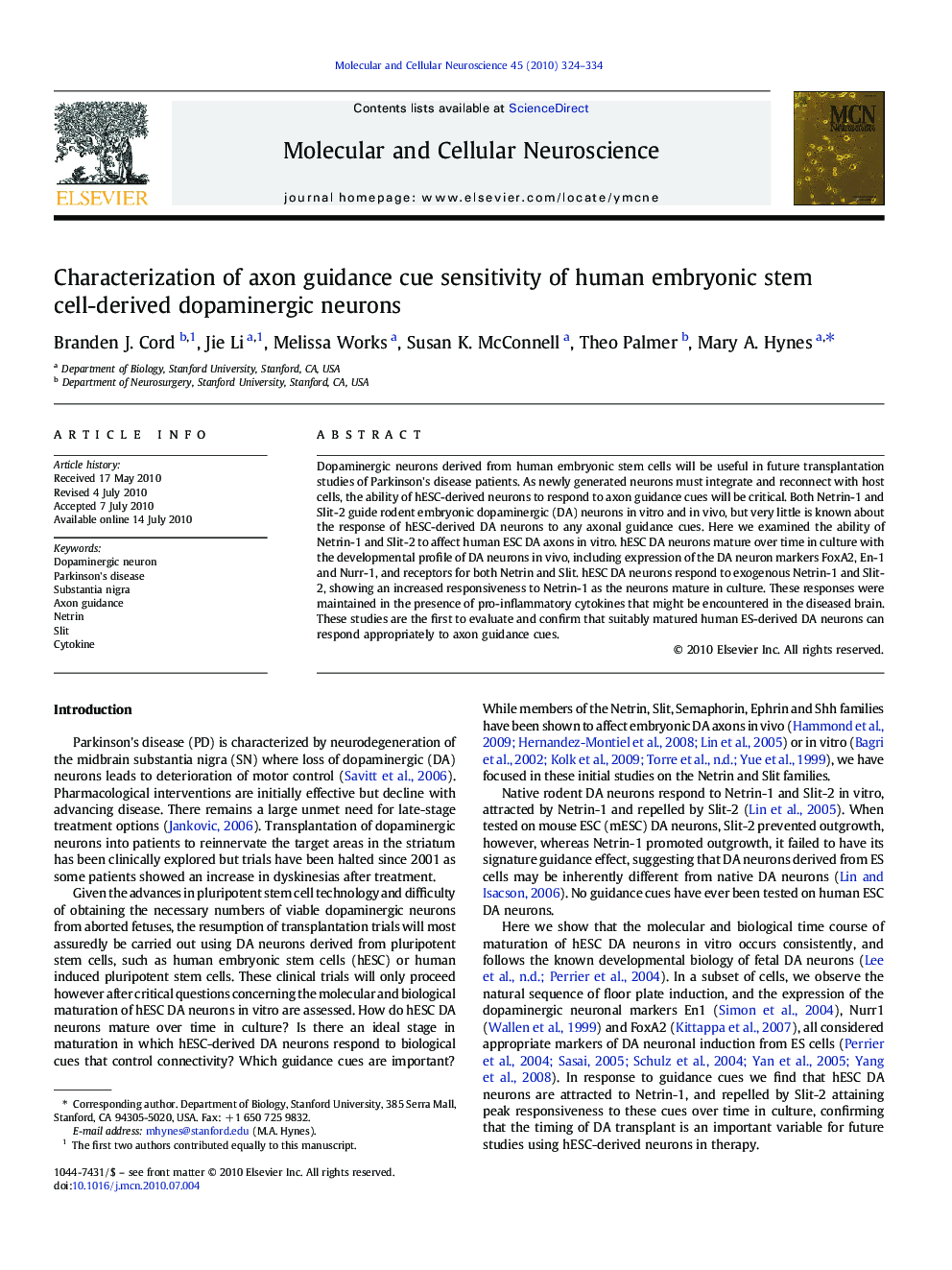| Article ID | Journal | Published Year | Pages | File Type |
|---|---|---|---|---|
| 10956603 | Molecular and Cellular Neuroscience | 2010 | 11 Pages |
Abstract
Dopaminergic neurons derived from human embryonic stem cells will be useful in future transplantation studies of Parkinson's disease patients. As newly generated neurons must integrate and reconnect with host cells, the ability of hESC-derived neurons to respond to axon guidance cues will be critical. Both Netrin-1 and Slit-2 guide rodent embryonic dopaminergic (DA) neurons in vitro and in vivo, but very little is known about the response of hESC-derived DA neurons to any axonal guidance cues. Here we examined the ability of Netrin-1 and Slit-2 to affect human ESC DA axons in vitro. hESC DA neurons mature over time in culture with the developmental profile of DA neurons in vivo, including expression of the DA neuron markers FoxA2, En-1 and Nurr-1, and receptors for both Netrin and Slit. hESC DA neurons respond to exogenous Netrin-1 and Slit-2, showing an increased responsiveness to Netrin-1 as the neurons mature in culture. These responses were maintained in the presence of pro-inflammatory cytokines that might be encountered in the diseased brain. These studies are the first to evaluate and confirm that suitably matured human ES-derived DA neurons can respond appropriately to axon guidance cues.
Related Topics
Life Sciences
Biochemistry, Genetics and Molecular Biology
Cell Biology
Authors
Branden J. Cord, Jie Li, Melissa Works, Susan K. McConnell, Theo Palmer, Mary A. Hynes,
